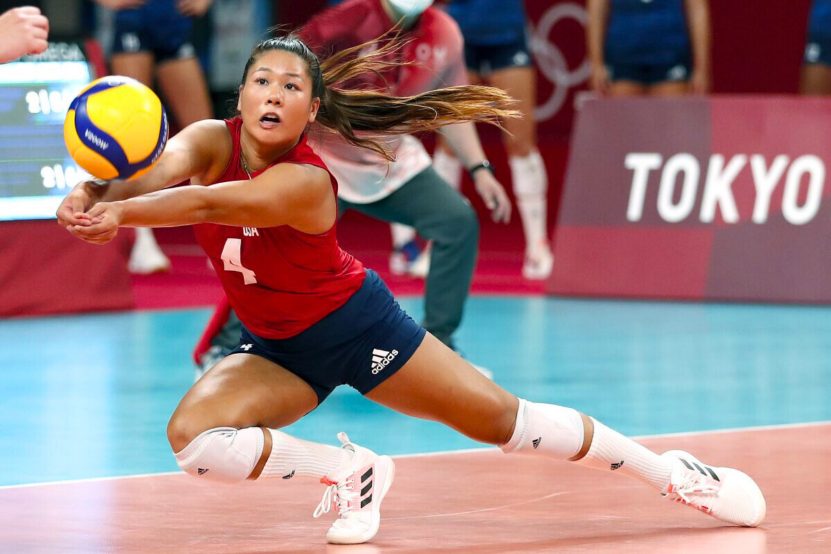A libero is a defensive specialist in volleyball, distinct from other positions due to several unique rules that apply to their gameplay. They are the only players not allowed to serve, spike the ball from above the net height, or rotate into the front-row positions during a game.
This specialization allows them to focus exclusively on defensive plays, making them crucial in turning the tide of a match. The libero’s unique role means they are often the most versatile defenders on the court, tasked with covering the greatest range of the backcourt.
Key Takeaways
- Liberos are defensive specialists known for their exceptional skills, quick reflexes, agility, leadership, and communication abilities, making crucial saves and guiding the team.
- They wear a distinct jersey color to be easily identified during the game.
- Liberos can substitute in and out of the back row without traditional limitations, facing restrictions on attacking and setting.
What Are They Known For?
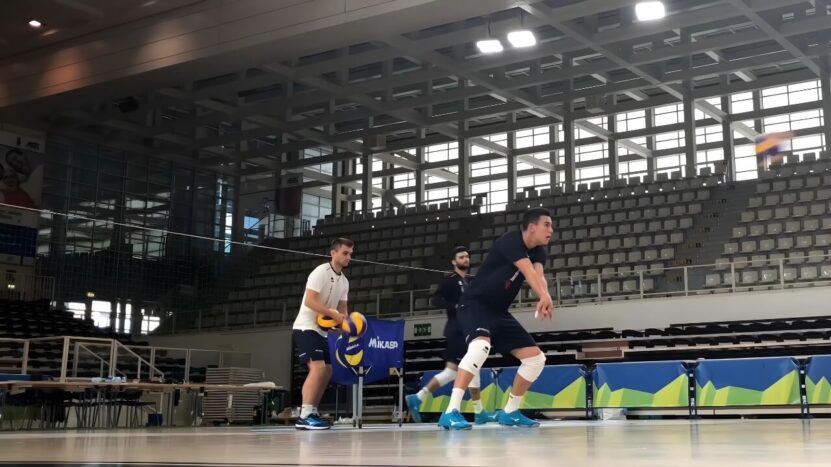
Liberos are known for their exceptional defensive skills, quick reflexes, and agility, enabling them to perform spectacular saves and digs. Beyond physical capabilities, they often exhibit strong leadership and communication abilities, guiding their teammates through complex plays and ensuring the team functions cohesively.
This position requires a player who is not only physically adept but also mentally sharp, capable of making split-second decisions that can prevent a point and shift momentum. Liberos must also maintain a high level of stamina and focus throughout the match, as they are constantly on the move, ready to dive or leap for the ball.
To understand the libero’s role, it’s useful to know about other positions like setters, who set up plays, and hitters, who score points.
Uniform and Visibility
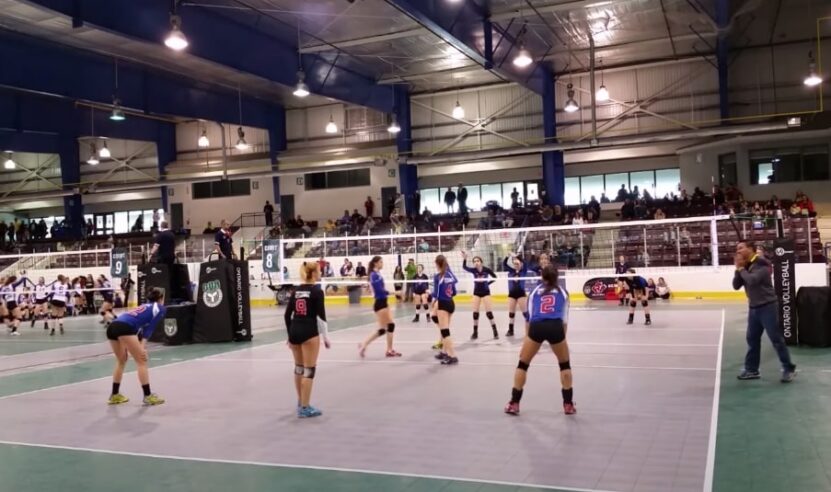
Easily identifiable by their distinct jersey color, which contrasts with their teammates, the libero’s unique uniform serves a practical purpose. It allows officials and players to quickly identify the libero during the fast-paced action of a game, ensuring the special rules that apply to them are enforced accurately.
This visibility also helps the libero in becoming a focal point of the team’s defense, allowing teammates to adjust their positions knowing the libero is covering the most vulnerable spots on the court. The distinct jersey not only highlights the libero’s role but also celebrates it, marking them as key players whose actions can greatly influence the game’s outcome.
Rules and Regulations
Rotation and Positioning
Liberos are exempt from the standard rotation rules that apply to other volleyball players, allowing them to substitute in and out of the back row without traditional limitations. However, they face restrictions on attacking and setting; for instance, they cannot attack the ball above net height from anywhere on the court.
This unique set of rules ensures that the libero’s impact is felt most in defensive plays, where their skills can shine without overshadowing the roles of other players. The libero’s ability to substitute freely makes them a wildcard of sorts, able to enter the game at crucial moments to bolster the defense.
Substitution Rules
The libero can make unlimited substitutions, entering and exiting the game without affecting the team’s total number of substitutions. Their ability to substitute is only limited by a requirement to not participate in a play directly before entering the game, ensuring a smooth flow of play.
This rule allows teams to maintain a strong defensive presence throughout the match, as the libero can be brought in to handle particularly difficult serves or attacks. It also enables coaches to strategize more effectively, using the libero as a tool to adapt to the flow of the game and the strategies of the opposing team.
Impact on Gameplay
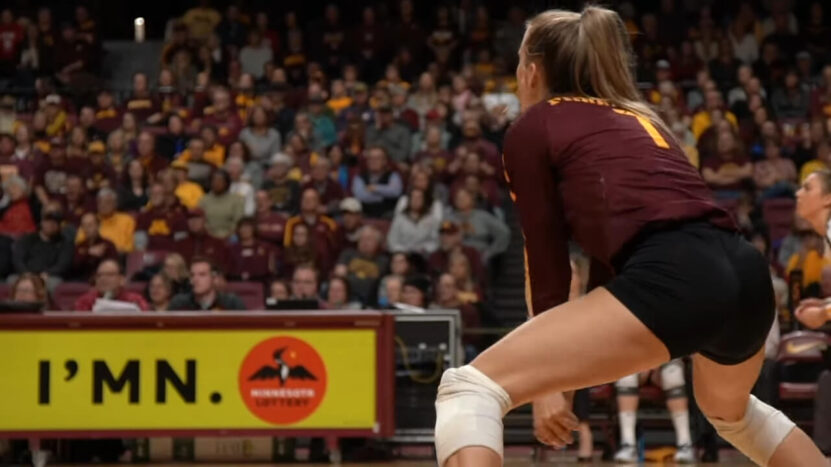
Liberos significantly influence defensive strategies, enhancing a team’s ability to control the ball and defend against spikes. Their role in ball control is also pivotal in setting up attacks, allowing them to initiate plays from the back row and support seamless transitions from defense to offense.
The presence of a skilled libero on the court can be a game-changer, providing teams with a safety net that allows other players to take more risks in their offensive strategies. By stabilizing the team’s defense, the libero also boosts the confidence of their teammates, knowing that there is a reliable last line of defense.
Strategy and Techniques
Defensive Strategies
Specializing in digging and receiving, liberos must excel in anticipating the opponents’ moves and positioning themselves effectively on the court. Their defensive strategies are crucial in prolonging rallies and creating opportunities for their team to score.
The best liberos have an intuitive sense of where the ball is going to land, often moving into position before the attacker has even made contact. Their ability to communicate with teammates, calling out plays and adjustments, is equally important in orchestrating a cohesive defensive effort.
Offensive Contributions
Though primarily defensive players, liberos contribute offensively by setting up the ball from the back row, especially in situations where the setter is unavailable. Their skill in facilitating smooth transitions is essential for a team’s offensive strategy.
This dual capability underscores the libero’s versatility, allowing them to assist in building attacks even without directly attacking the ball. Their quick and accurate passes are vital in maintaining the momentum of the game, ensuring that their team can capitalize on every opportunity to score.
Training and Development
Aspiring liberos must focus on developing key skills such as reflexes, agility, and ball control. Physical training emphasizes quick movements and endurance, while mental training involves understanding opponents’ strategies and enhancing communication skills.
The training regimen for a libero is rigorous, requiring countless hours of practice aimed at perfecting the art of the dive and the dig. They must also study game footage, learning to read the body language and patterns of opponents to predict their actions more accurately.
The Libero’s Role in Team Dynamics
Liberos serve as leaders on the court, directing defensive play and ensuring effective communication among team members. Their role is crucial in maintaining team morale and organizing defense, often acting as the backbone of the team’s strategic setup.
This leadership is not just about dictating play but also about inspiring teammates and demonstrating commitment and resilience in every action. The libero’s energy and determination can lift a team during challenging moments, making their role as much about mental strength as it is about physical skill.
Challenges and Limitations
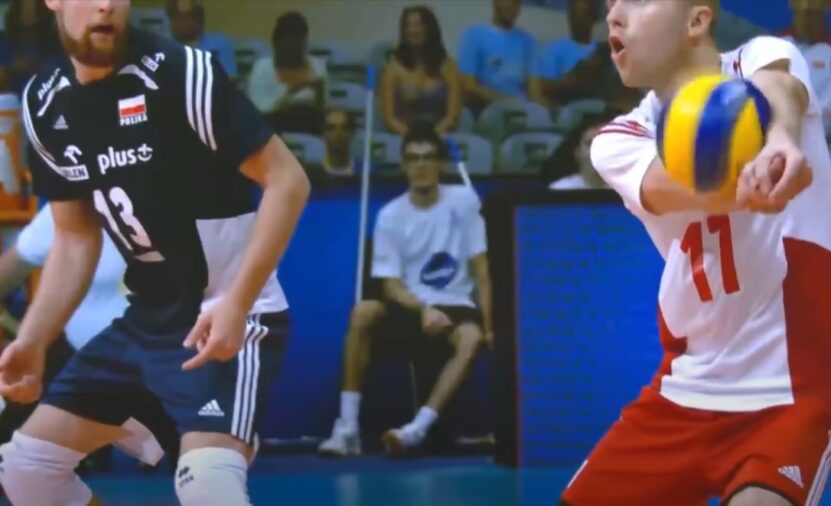
Despite their critical role, liberos face unique challenges, including the physical demands of constant quick movements and the mental pressure of anticipating opponents’ actions. Additionally, their inability to perform front-row attacks limits their direct scoring capabilities, emphasizing their specialized defensive role.
These challenges require liberos to be not only physically fit but also mentally tough, ready to face the pressure of their responsibilities. The limitations placed on their offensive capabilities also push liberos to find creative ways to contribute to their team’s success, proving that their value extends far beyond the confines of traditional scoring methods.
FAQs
Can a libero become a team captain?
Yes, a libero can be designated as a team captain. While their on-court role is specialized, their leadership and strategic insight allow them to effectively lead their team, coordinating plays and motivating teammates.
How does a libero change the dynamics of a team’s defense?
A libero enhances a team’s defense by providing a stable and reliable presence in the back row. Their specialized skills in digging and receiving allow for better ball control and defense against powerful spikes, enabling the team to transition more smoothly from defense to offense.
Are there any restrictions on the libero’s actions when they are in the back row?
While in the back row, liberos cannot block or attempt to block. They can make plays on the ball, but they cannot complete an attack hit from anywhere (including the back row) if, at the moment of contact, the ball is entirely higher than the top of the net.
What happens if a libero is injured during a match?
If a libero is injured during a match and cannot continue, teams are typically allowed to designate another player as the libero for the remainder of the match. However, this can vary by specific league or tournament rules, and some competitions may have specific guidelines for libero replacement.
How does the role of a libero differ between indoor and beach volleyball?
The libero position exists only in indoor volleyball; there is no libero role in traditional beach volleyball, which is typically played with teams of two players. The nature of beach volleyball, with fewer players and a different set of strategies, does not require a specialized defensive role similar to that of the libero in indoor volleyball.
Summary
In conclusion, the libero plays a crucial role in volleyball, focusing on defense to help their team control the ball and protect against opponents’ attacks. They wear different colored jerseys, making it easy for everyone to see who they are on the court.
Liberos have special rules, like being able to substitute more freely than other players, but they can’t attack the ball above the net or serve. Their skills in saving difficult shots and setting up the ball for their team are essential, making them key players in any volleyball match.
Despite facing challenges like physical demands and limitations in attacking, these players are vital for a strong defense and effective team strategy.

